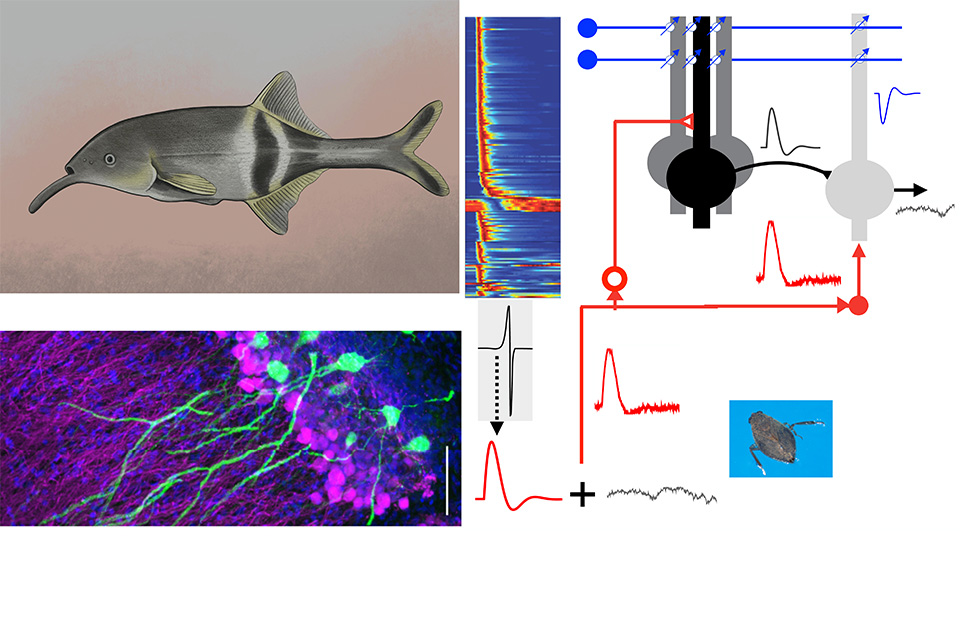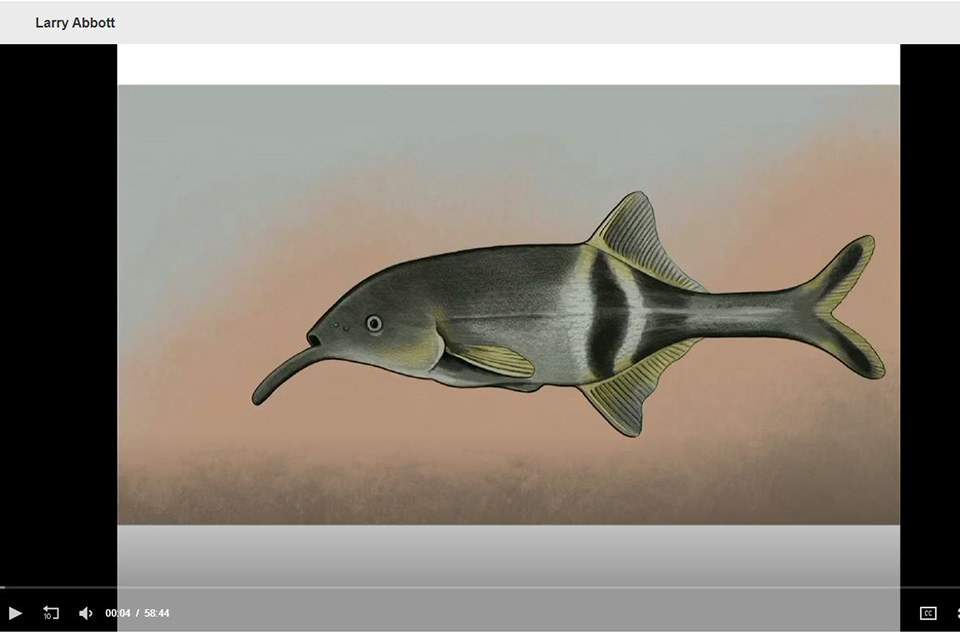Larry Abbott, PhD
William Bloor Professor of Theoretical Neuroscience
Department of Neuroscience
Columbia University Medical Center
Zuckerman Mind, Brain and Behavior Institute
(December 10, 2019)
Learning in a multilayer network of the electric fish
Today's Neuroscientists are fortunate to be working during a golden age for the exploration of neural circuits. Tools for recording from and manipulating neurons in animals actively performing tasks and remarkable advances in neuroanatomy now allow researchers to explore neural circuits in unprecedented ways. Doctor Abbott augments these new discoveries by applying modeling methods to the data, allowing hypotheses about circuit-level mechanisms to be developed and then experimentally tested. During his time at Brandeis, he described two examples of this collaborative style of research, with two model species, the fruit fly and the mormyrids, a species of fish.
 The fruit fly has been, for many years, a major source of discoveries in neuroscience and, indeed, across biology, and many important advances in fly research have been made by researchers at Brandeis. Doctor Abbott described new results, done in collaboration with experimental researchers at the Howard Hughes Janelia Research Campus and at Rockefeller University, on a region of the fly brain, the central complex, that plays a key role in navigation. The central complex contains a compass-like circuit that maintains a representation of the fly's orientation in its environment. This inner sense of orientation is aligned to visual features in the environment through neurons that respond to patterns of light and dark. Doctor Abbott described how connections are made between these visual neurons and the 'compass' neurons that represent heading direction. This system is remarkably plastic so that the map between visual features and the inner compass can be altered in different environments. To make use of its internal compass, a fly must be able to set a goal direction and maintain this direction as it walks or flies. Doctor Abbott also described how a goal direction could be established in the circuitry of the central complex, and how deviations from the goal direction could be read out to drive turning toward the correct heading.
The fruit fly has been, for many years, a major source of discoveries in neuroscience and, indeed, across biology, and many important advances in fly research have been made by researchers at Brandeis. Doctor Abbott described new results, done in collaboration with experimental researchers at the Howard Hughes Janelia Research Campus and at Rockefeller University, on a region of the fly brain, the central complex, that plays a key role in navigation. The central complex contains a compass-like circuit that maintains a representation of the fly's orientation in its environment. This inner sense of orientation is aligned to visual features in the environment through neurons that respond to patterns of light and dark. Doctor Abbott described how connections are made between these visual neurons and the 'compass' neurons that represent heading direction. This system is remarkably plastic so that the map between visual features and the inner compass can be altered in different environments. To make use of its internal compass, a fly must be able to set a goal direction and maintain this direction as it walks or flies. Doctor Abbott also described how a goal direction could be established in the circuitry of the central complex, and how deviations from the goal direction could be read out to drive turning toward the correct heading.
A second neural circuit discussed by Doctor Abbott serves an interesting function in a type of fish known as mormyrids. Like sharks and catfish, mormyrids can sense the extremely weak electric fields emitted by their prey. However, unlike those other fish, mormyrids emit their own, much strong, electric fields as part of a separate system for detecting objects in the water and for communication. These self-generated fields interfere with detection of the prey signals, and the circuit described by Doctor Abbott is responsible for removing them. Work with an experimental group at Columbia, revealed how this subtraction is done in a two-stage neural circuit. This work has relevance to computations done by other animals, including humans, to distinguish, for example, changes in the visual world caused by self-motion from those caused by the movement of objects in the environment.

Visual abstract from Larry Abbott's talk
